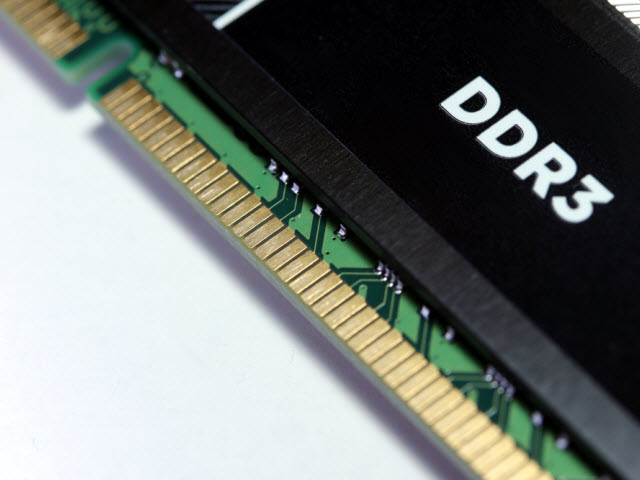DDR3 Memory: What Makes Performance Better?
What makes one memory platform better than the other? In this article we go through benchmark testing and analysis to give you an idea of what you can expect from different DRAM sets running on Intel and AMD so you can get the best DDR3 performance.
DDR3 Performance: What Makes Memory Perform Better?
Why you can trust Tom's Hardware
STOP! I know what you're thinking. And no, this isn't another typical DRAM review, so don't go running off to load up on caffeine. Sure, it will share some things you see in straightforward reviews — the intro, a look at the sets of DRAM, a look at the hardware test bed(s) and a few benchmarks. But the road will be far from straight and narrow.
I spend a fair amount of time in the Tom's Hardware forums, and a number of common problems and questions often arise about DRAM. Often, people don't understanding why the DRAM runs as it does, why one gets worse performance on one platform than another or between similar sets of DRAM, how to set up DRAM to run at its full specifications, whether one kind of DRAM works with another, and so on. I also know the DRAM manufacturers get flooded with the same questions, so I approached them with the idea of a review, but one where I would examine the performance difference on an AMD vs. Intel basis, and answered some of the questions I frequently see in the forums.
A 32GB set of 2400 DRAM would be ideal for the testing, since it can easily be downclocked and possibly overclocked, and we could scale the DRAM down to 16GB, or even 8GB for comparative testing. I approached several DRAM manufacturers and received a healthy dose of samples in response from (in alphabetical order): ADATA, AMD Radeon Memory, Corsair, G.Skill, Kingston, Mushkin Enhanced and Team Group.
MORE: Best Memory
MORE: All Memory Articles
MORE: Memory in the Forums
Current page: DDR3 Performance: What Makes Memory Perform Better?
Next Page DRAM Sets TestedGet Tom's Hardware's best news and in-depth reviews, straight to your inbox.
-
Damn_Rookie It's great to see you getting the chance to do some articles on here, Tradesman1 Jim :)Reply -
PaulBags Interesting. I'll be coming back here several times over the next several months, as I save up for & consider options for a new computer. Good to know 2x 2 stick kits arn't nessicarily equal to a 4 stick kit, and annoying since I don't see many 4 stick kits in local online stores.Reply
Also good to know frequency has such a measurable impact on compression, I probably don't need fancy high freq ram but now I'm going to be more annoyed my budget won't allow it.
Thanks for the ponderous read! :) -
Cryio This was such an eye opening read. Until now I though different ram frequencies really didn't amount to much. By those times in multitasking ? Wow.Reply -
Crashman Reply
Nope. Latency stays roughly the same while clock cycles speed up. DDR3-1333 CAS 6 and DDR3-2666 CAS 12 have the same latency in nanoseconds, the number of cycles doubles while each cycle occurs in half the time.15517997 said:Since the dawn of computer memory: Faster data rates=More access latency.
-
synphul Pretty good review, made for a fun read. I'm still amazed at the ram incompatibility when mixing different sets. I know it exists, it's not the first time people have experienced this. I've mixed various ram just on a roll of the dice and I guess I've been lucky. The brand mixing was random. When upgrading one system from ddr2 to ddr3 I threw 2x2gb of patriot in with 2x2gb of geil evo one without issue. When upgrading one of these systems and adding ram, I added 2x4gb of team zeus at 1600mhz with 2x4gb of geil evo corsa at 1333mhz and just let the motherboard configure it and match to the lower speeds/settings. No issues with either.Reply -
xFolterknechtx 1.65V sticks on Z87/97 boards? I think the upper limit Intel mentioned in their white paper for Ivy and Haswell was something around 1.55 - 1.575V for DRAM voltage.Reply
Do what you want with your hardware guys, but I ll stay clear of these voltages. -
Pierre Olivier Vidal I have 2 questions for future articles.Reply
1 - Why do memory control sugest no higher voltage then 1.65V yet my DRAM says it can handle up to 2.4V and why would they make a DRAM capable of handling 2.4V if no memory control can push safely over 1.65V? ( I'm runing on Kingston Beast 32GB 2400MHz )
2 - Why is there some DRAMs that are not compatible with some motherboards, what makes it compatible or not? -
Onus I would hate to risk shortening the life of an expensive Intel CPU by running more than 1.6V through its IMC. You raised it to 1.7??Reply
